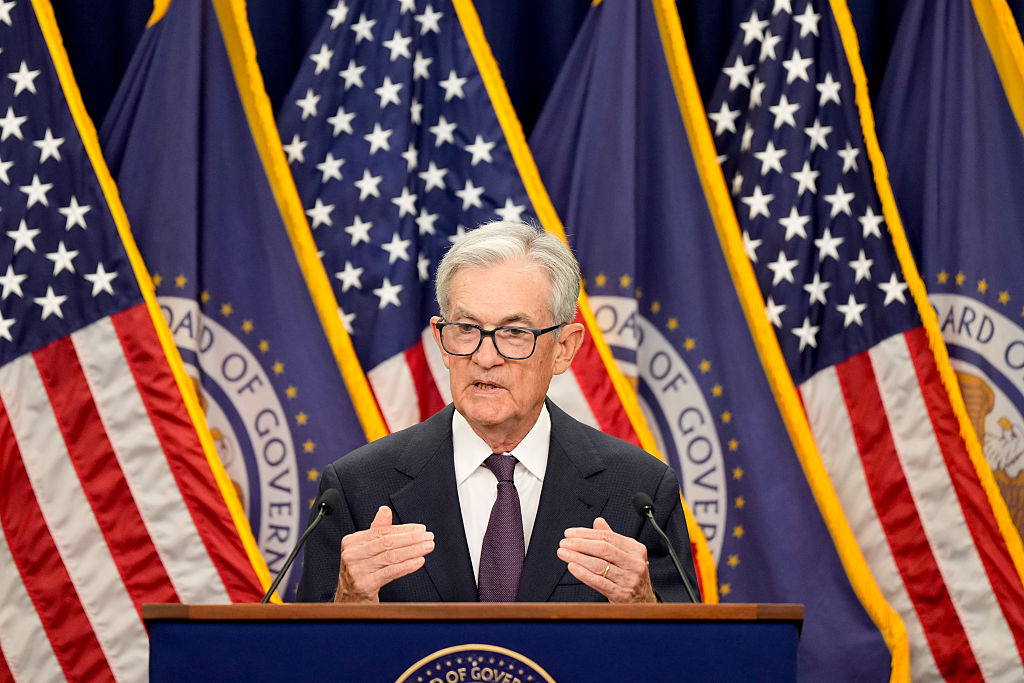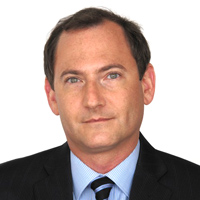When Is the Next Fed Meeting?
A softer labor market should be supportive of another rate cut at the next Fed meeting.


The Federal Reserve is in a tricky spot these days as the central bank's rate-setting committee gathers for its next meeting.
On the one hand, inflation remains above the Fed's long-term target and price pressures could resurface as a result of President Donald Trump's tariff policies.
On the other hand, the jobs outlook is weakening and too many folks are priced out of the housing market. The lack of official data during the government shutdown only complicates matters for policymakers ahead of the next Fed meeting.
From just $107.88 $24.99 for Kiplinger Personal Finance
Become a smarter, better informed investor. Subscribe from just $107.88 $24.99, plus get up to 4 Special Issues

Sign up for Kiplinger’s Free Newsletters
Profit and prosper with the best of expert advice on investing, taxes, retirement, personal finance and more - straight to your e-mail.
Profit and prosper with the best of expert advice - straight to your e-mail.
For example, the next CPI report, a measure of consumer inflation in November, is slated for release a week after the Fed convenes, as is the November jobs report. Meanwhile, the October CPI report was cancelled altogether.
Happily, private data and the resumption of official statistics give the central bank's Federal Open Market Committee (FOMC) enough to go on, experts say, and lower borrowing costs are on the way.
"The Fed will pay more attention to the private ADP jobs report than usual since the official November jobs report is delayed," writes Bill Adams, chief economist at Comerica Bank. "The Fed will likely note the increase in the unemployment rate through September when they meet next, and that data like ADP's imply that the unemployment rate likely rose further in October and November."
As a result, the Fed is likely to cut the short-term federal funds rate at its next meeting, Adams says.
When you consider the Fed's dual mandate against the backdrop of sticky inflation and a softening labor market, it makes sense that folks are obsessed with tracking when the next Fed meeting is coming up.
After all, lower interest rates today equal higher returns for equities tomorrow.
The next Fed meeting: What to expect

For the record, the central bank's rate-setting committee is called the Federal Open Market Committee.
As you can see from the FOMC meeting calendar below, the committee meets eight times a year, or about once every six weeks. The FOMC is required to meet at least four times a year and may convene additional meetings if necessary. The convention of meeting eight times per year dates back to the market stresses of 1981.
FOMC meetings last two days and conclude with the committee releasing its policy decision at 2 pm Eastern time. The Fed chief then holds a press conference at 2:30 pm. (Pro tip: as closely scrutinized as the Fed statement might be, market participants are usually even more keen on what the Fed chair has to say in the press conference.)
As for the next Fed meeting, it will begin on Tuesday, December 9, and conclude with a policy statement on Wednesday, December 10, at 2 pm Eastern.
A quarter-point cut is by far and away the betting favorite.
As of December 5, interest rate traders assigned an 87% probability to the FOMC trimming the fed funds rate by 25 basis points (0.25%) to a target range of 3.50% to 3.75%, according to CME FedWatch. That's up from 62% a month ago. The odds of rates remaining unchanged stood at 13%, down from 38% last month.
The schedule of upcoming Fed meetings is listed below, courtesy of the FOMC.
December 9-10, 2025 |
January 27-28, 2026 |
March 17-18, 2026 |
April 28-29, 2026 |
June 16-17, 2026 |
July 28-29, 2026 |
September 15-16, 2026 |
October 27-28, 2026 |
December 8-9, 2026 |
Related Content
Profit and prosper with the best of Kiplinger's advice on investing, taxes, retirement, personal finance and much more. Delivered daily. Enter your email in the box and click Sign Me Up.

Dan Burrows is Kiplinger's senior investing writer, having joined the publication full time in 2016.
A long-time financial journalist, Dan is a veteran of MarketWatch, CBS MoneyWatch, SmartMoney, InvestorPlace, DailyFinance and other tier 1 national publications. He has written for The Wall Street Journal, Bloomberg and Consumer Reports and his stories have appeared in the New York Daily News, the San Jose Mercury News and Investor's Business Daily, among many other outlets. As a senior writer at AOL's DailyFinance, Dan reported market news from the floor of the New York Stock Exchange.
Once upon a time – before his days as a financial reporter and assistant financial editor at legendary fashion trade paper Women's Wear Daily – Dan worked for Spy magazine, scribbled away at Time Inc. and contributed to Maxim magazine back when lad mags were a thing. He's also written for Esquire magazine's Dubious Achievements Awards.
In his current role at Kiplinger, Dan writes about markets and macroeconomics.
Dan holds a bachelor's degree from Oberlin College and a master's degree from Columbia University.
Disclosure: Dan does not trade individual stocks or securities. He is eternally long the U.S equity market, primarily through tax-advantaged accounts.
-
 Your End of Year Insurance Coverage Review Checklist
Your End of Year Insurance Coverage Review ChecklistStop paying for insurance you don't need and close coverage gaps you didn't know about with this year-end insurance review.
-
 Crypto Trends to Watch in 2026
Crypto Trends to Watch in 2026Cryptocurrency is still less than 20 years old, but it remains a fast-moving (and also maturing) market. Here are the crypto trends to watch for in 2026.
-
 Original Medicare vs Medicare Advantage Quiz: Which is Right for You?
Original Medicare vs Medicare Advantage Quiz: Which is Right for You?Quiz Take this quick quiz to discover your "Medicare Personality Type" and learn whether you are a Traditionalist, or a Bundler.
-
 Your End of Year Insurance Coverage Review Checklist
Your End of Year Insurance Coverage Review ChecklistStop paying for insurance you don't need and close coverage gaps you didn't know about with this year-end insurance review.
-
 Crypto Trends to Watch in 2026
Crypto Trends to Watch in 2026Cryptocurrency is still less than 20 years old, but it remains a fast-moving (and also maturing) market. Here are the crypto trends to watch for in 2026.
-
 Time Is Running Out to Make the Best Moves to Save on Your 2025 Taxes
Time Is Running Out to Make the Best Moves to Save on Your 2025 TaxesDon't wait until January — investors, including those with a high net worth, can snag big tax savings for 2025 (and 2026) with these strategies.
-
 4 Smart Ways Retirees Can Give More to Charity, From a Financial Adviser
4 Smart Ways Retirees Can Give More to Charity, From a Financial AdviserFor retirees, tax efficiency and charitable giving should go hand in hand. After all, why not maximize your gifts and minimize the amount that goes to the IRS?
-
 I'm an Insurance Pro: If You Do One Boring Task Before the End of the Year, Make It This One (It Could Save You Thousands)
I'm an Insurance Pro: If You Do One Boring Task Before the End of the Year, Make It This One (It Could Save You Thousands)Who wants to check insurance policies when there's fun to be had? Still, making sure everything is up to date (coverage and deductibles) can save you a ton.
-
 Small Caps Hit a New High on Rate-Cut Hope: Stock Market Today
Small Caps Hit a New High on Rate-Cut Hope: Stock Market TodayOdds for a December rate cut remain high after the latest batch of jobs data, which helped the Russell 2000 outperform today.
-
 Is a New $25,000 Health Care Tax Deduction Coming in 2026?
Is a New $25,000 Health Care Tax Deduction Coming in 2026?Tax Policy A proposal from GOP Sen. Josh Hawley is adding to the chatter about health care affordability.
-
 Should You Tap Your Home Equity Before 2026?
Should You Tap Your Home Equity Before 2026?As borrowing rates and tax law shifts converge, here's what homeowners need to know before pulling equity out of their home.